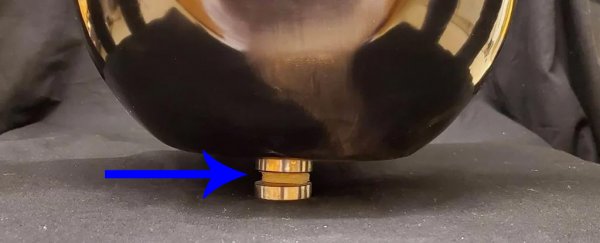It's no surprise that scientists have struggled to find an artificial substitute for natural knee cartilage: it's an amazing biological substance that combines the properties of a soft cushion and a tough barrier to keep our busy leg joints from harm.
But it looks like we've arrived at a long-awaited breakthrough - researchers think they may have finally developed a material that is a match to the cartilage found in our bodies, and could be used as a replacement after injuries or in old age.
"We set out to make the first hydrogel that has the mechanical properties of cartilage," says chemist Ben Wiley from Duke University.
A significant number of people could benefit from something like this, as more than 790,000 knee replacements happen in the US every year. Currently those replacements - which involve pretty invasive surgery - may only last for a couple of decades before they need to be replaced again.
Imagine if you could replace just the worn-out or damaged cartilage, instead of having to rip out the entire knee joint.
As with other hydrogels, the main ingredients in this new material are water-absorbing polymers: in this case one polymer made of spaghetti-like strands, intertwined with another polymer that's less flexible and more basket-like. A third polymer, made of cellulose fibres, acts as a mesh holding everything together.
When the material is stretched, it's the third polymer that keeps the gel intact. When it's squeezed, polymers one and two – with negative charges running along their length – repel each other and stick to water, so the original shape can be restored.
The hydrogel passed with top marks in both these crucial categories – stretching and squishing – and showed better performance than other existing hydrogels. In one test of 100,000 repeated pulls, the artificial cartilage held up as well as the porous titanium material used in bone implants.
"Only this combination of all three components is both flexible and stiff and therefore strong," says materials scientist Feichen Yang, also from Duke University.
In tests where the hydrogel was rubbed against natural cartilage – a million times, no less – it was shown to be just as resistant to wear and tear as the real thing, and more durable than the artificial cartilage that's used today in big toe operations (notable because that gel has regulatory approval in the US).
However, getting this new hydrogel approved for use in humans could take up to three years, the researchers say – so there's some way to go yet before patients will be able to take advantage of the innovation.
So far the non-toxicity of the hydrogel has only been tested against lab-grown cells. The next step is to see if it can be safely transplanted into sheep, and only after that can trials on actual people get underway.
Eventually though, the new material shows plenty of promise as an option for those experiencing knee pain: they might one day be able to restore a joint to full working order, without long recovery times or a short lifespan for the replacement cartilage. It should help until we learn how to regrow our own cartilage, at least.
The research has been published in Advanced Functional Materials.
